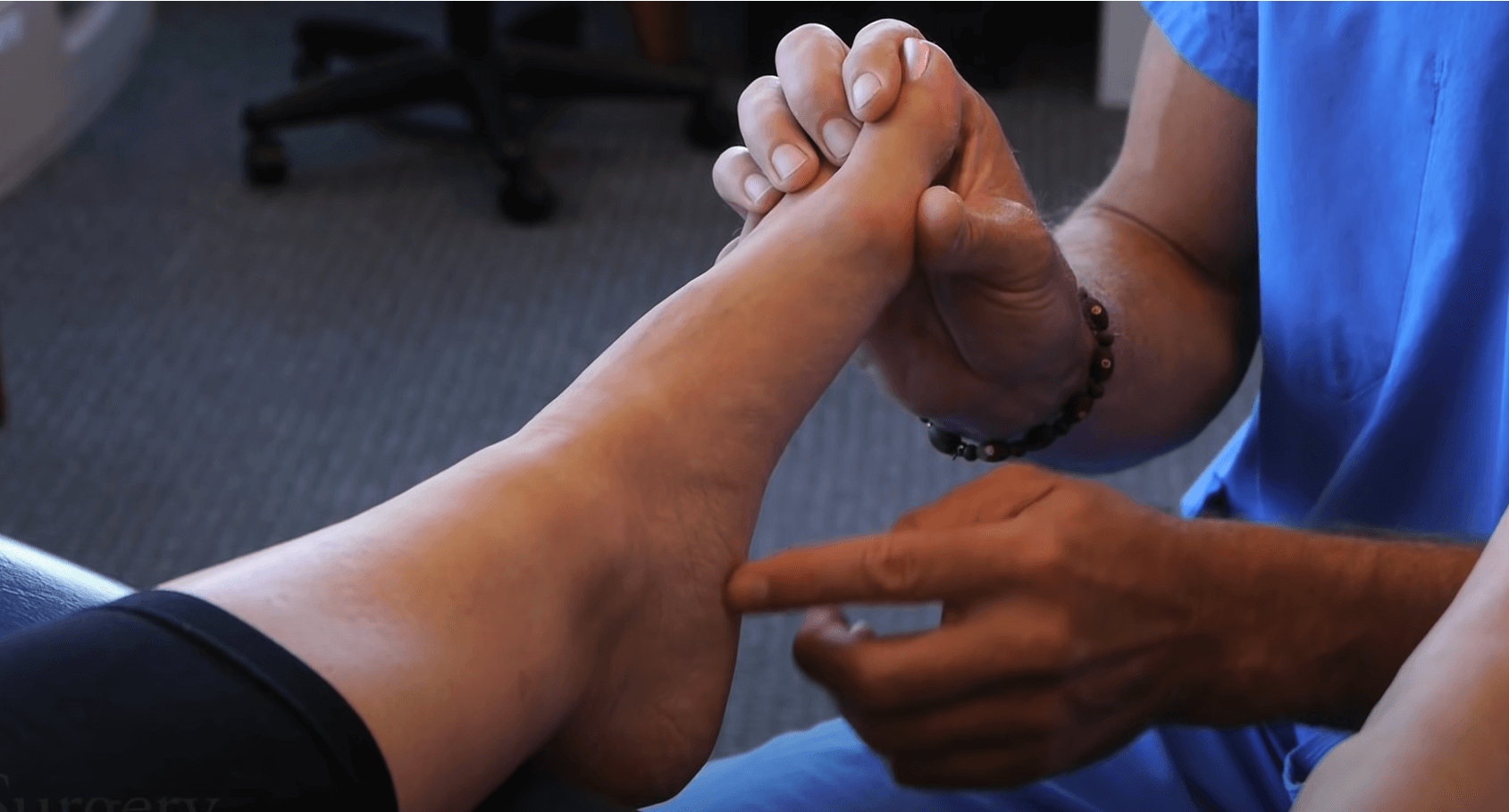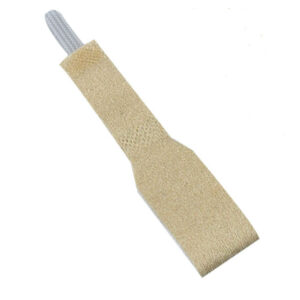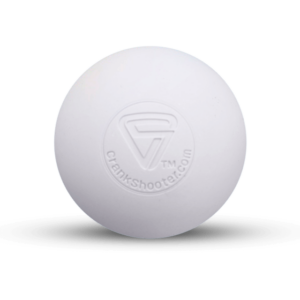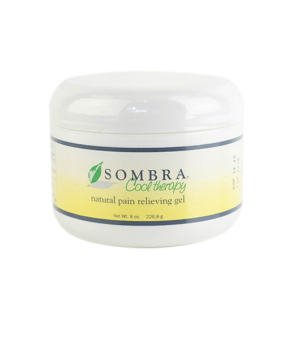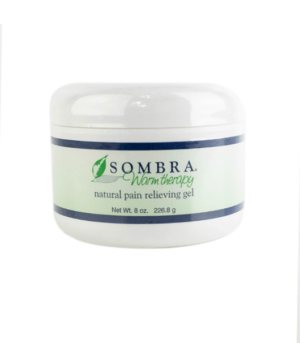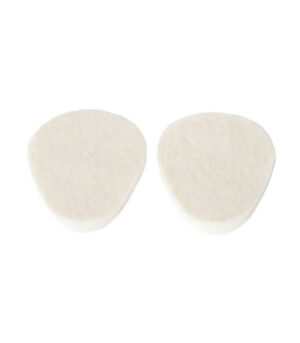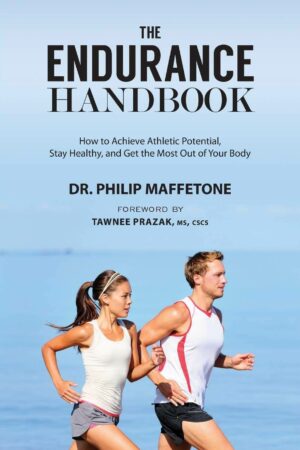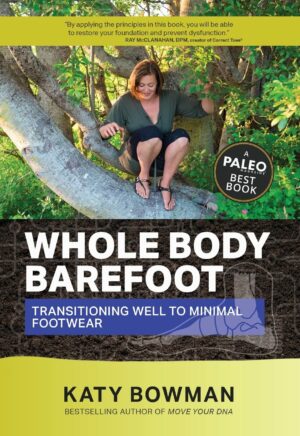Natural plant products have been used throughout human history for multiple purposes, including health, medicinal, and culinary reasons. Many of the plants from which natural botanical and nutraceutical supplement products are derived from are billions of years old. Most of these products are produced as secondary metabolites by plants as a natural defense mechanism against disease and infection. Many of these natural products have pharmacological or biological activity that can be exploited in pharmaceutical drug discovery and drug design. Medicines derived from plants have played a pivotal role in the health care of many cultures, both ancient and modern. Read further to learn about specific botanicals and nutrients that may be beneficial for foot health and reduce foot pain.
- DISCLAIMER: Please note that Correct Toes does not provide medical advice, diagnosis, or treatment. The content contained in this website and in the post are for educational or informational purposes only and is not intended to replace or augment professional medical instruction, diagnosis, or treatment. Do not shun professional medical assistance or avoid seeking treatment for your health problems due to something you have read or viewed on this website. Schedule an appointment with your primary care provider if have any questions about medical conditions or your health status. Correct Toes does not accept responsibility for the use of this website for anything beyond a reference tool, and any use of this website as a diagnosis or treatment tool is at your own risk. Always consider reviewing all information and products with your physician, as your doctor can best assess your personal healthcare needs.

Anti-Inflammatories (…for inflammation)
Turmeric (Curcuma longa) – The major component of curry powder, this spice has been used for both culinary and medicinal purposes for nearly 4,000 years in both the Chinese and Indian (Ayurvedic) systems of medicine. Historically, turmeric has been used most specifically for the treatment of sprains and inflammation, to enhance wound healing, and for digestive and liver complaints. Turmeric is most notably used as an anti-inflammatory agent but has also been described as an antioxidant, anti-carcinogenic (anti-cancer), cardio-protective (heart-protective), neuro-protective (nerve and brain-protective), hepato-protective (liver-protective), carminative (relieves gas), and anti-microbial. Curcumin is thought to be the most active component of turmeric. Several studies have found that the anti-inflammatory properties of curcumin are comparable to NSAIDs and can be as effective as cortisone for inflammation, and the antioxidant properties of curcumin are comparable to notable antioxidants like vitamins C and E. Curcumin regulates inflammation by influencing the activity of several enzymes and cytokines by inhibiting both COX-1 and COX-2 pathways (inflammatory pathways, similar mechanism to NSAIDs) and by suppressing the NF-kB pathway (inflammatory and immune response pathway, similar mechanism to cortisol). Additionally, curcumin displays virtually no toxicity or adverse reactions. Unfortunately, the bioavailability (the proportion of a substance which enters circulation and is able to have an active effect) of curcumin is quite poor; however, modern technologies have allowed for novel, more bioavailable preparations of curcumin, like Theracumin by Integrative Therapeutics.
Bromelain – A group of proteolytic (protein-digesting) enzymes derived mostly from the stem and juice of the pineapple (Ananas comosus) plant. Bromelain is considered an anti-inflammatory agent helpful in healing minor injuries and improving joint mobility; particularly the pain, swelling, and tenderness that accompanies sports injuries, muscle injuries, and sprains and strains. Additionally, other inflammatory conditions such as edema, rheumatoid arthritis, bruises, fractures, and surgeries all typically respond favorably to orally administered bromelain. Bromelain is a natural blood thinner that inhibits platelet aggregation, so avoid combining it with other anti-coagulants to prevent excessive bleeding. For bromelain to be utilized systemically, it must reach the circulatory system via absorption from the small intestine. For this reason, it is suggested to take bromelain in an enterically–coated form and away from food. Papain is another proteolytic enzyme derived from papaya (Carica papaya), and is commonly used in conjunction with bromelain.
Frankincense (Boswellia serrata) – An herb with a long history of use in Ayurvedic medicine that has anti-inflammatory, anti-arthritic, and analgesic (pain relief) properties found to be beneficial for treatment of rheumatoid and osteoarthritis, asthma, and IBD. Boswellia is a circulatory stimulant that reduces pain and inflammation similar to NSAIDs but does not typically cause stomach irritation like NSAIDs do. Boswellia inhibits pro-inflammatory mediators in the body, such as leukotrienes, and thus affects various inflammatory diseases that are perpetuated by leukotrienes, such as those listed above. Clinically, Boswellia is most often used in the treatment of degenerative and inflammatory joint disorders. Boswellia can reduce the total white blood cell count in joint fluid and inhibit leukocyte elastase, which is released in rheumatoid arthritis.
Fish Oil (Omega-3 Fatty Acids DHA and EPA) – Research has revealed that omega-3 polyunsaturated fatty acids are some of the most effective natural anti-inflammatory agents available, shown to reduce pain and inflammation associated with arthritis and other inflammatory conditions. Docosahexaenoic acid (DHA) is important for brain function, vision, and joint health. Eicosapentaenoic acid (EPA) supports immune function, blood clotting, and circulation. Together they aid in restoring balance to the inflammatory cascade, helping to reduce risk of heart attack and stroke, improving dyslipidemia (imbalanced blood lipids), circulation, and dry skin. Omega-3 fatty acids from fish oil help supply the building blocks for the natural resolution phase of inflammation, favorably affect the genetic expression of factors related to inflammation, and shift the production of prostaglandin and leukotrienes (both are multi-functional lipid-based hormones that are very important agents in the inflammatory response, amongst other things) to less inflammatory mediators. Fish oil also helps to modulate cellular membrane structures, including their fluidity, which affects protein function, ion permeability, the activity of membrane-associated proteins, and signaling pathways with other cells and intracellular organelles. Rather than treating one specific target, fish oil modulates a variety of cellular pathways to improve function and reduce inflammation, giving it broad-based multi-system benefit.

Analgesics (…for pain relief)
Marijuana (Cannabis sativa) – A plant used recreationally and medicinally as far back as 500 BC in Central Asia, before being introduced into Africa, Europe, and eventually the Americas. The two main active components in cannabis products are the psychoactive tetrahydrocannabinol (THC), which increases appetite and reduces nausea, and the non-psychoactive cannabidiol (CBD), which helps to decrease anxiety, chronic pain and inflammation. We have found that cannabis products that contain both CBD and THC (with a ratio of more CBD to less THC, typically around 20:1) are more effective than cannabis products containing CBD only. Although cannabis can be psychologically addictive, it isn’t considered to cause physical dependency. For pain, it is clearly much safer than opiates and can be used in place of NSAIDs (like Advil, Motrin, and Aleve) which can cause stomach ulcers, GERD (reflux), and liver and kidney problems. Cannabis is also a muscle relaxant, used successfully to lessen tremors in Parkinson’s disease, and for chronic pain conditions like fibromyalgia, neuropathy, endometriosis, and interstitial cystitis. Cannabis can be taken orally, inhaled, or used as a topical. In the United States, cannabis is currently illegal federally, yet is recreationally legal in 11 states and the District of Columbia. Please review your local laws and legislature before considering cannabis use.
Cayenne (Capsicum frutescens) – Also known as chili or red hot pepper, cayenne was originally cultivated in the tropical and southern regions of the Americas but is now grown throughout the world, including the US. This fruit has been used for various medicinal purposes by the native peoples of the American tropics for hundreds of years. Capsaicin, considered the most important and most active component of cayenne, produces highly selective regional anesthesia by causing degeneration of capsaicin-sensitive nociceptive (pain-sensing) nerve endings which can produce significant and long-lasting increases in nociceptive thresholds. When topically applied to the skin or mucous membranes, capsaicin is known to stimulate and then block small-diameter pain fibers by depleting them of the neurotransmitter substance P. Substance P is thought to be the principal chemomediator of pain impulses from the periphery and has been shown to activate inflammatory mediators into joint tissues in osteoarthritis and rheumatoid arthritis. Modern clinical use of cayenne pepper has focused on the use of topical capsaicin-containing preparations. These preparations may offer significant benefits in a number of conditions, including the pain associated with pain disorders, diabetic neuropathy, cluster headache, osteoarthritis, and rheumatoid arthritis. Sombra is a Correct Toes favorite capsaicin-based topical. Be sure to wash hands after use as the capsaicin will be irritating to eyes, mouth, nose and other mucus membranes.
White Willow (Salix alba) – Bark from the white willow tree is one of the oldest herbal remedies for pain and inflammation, dating back to ancient Egyptian, Roman, Greek, and Indian civilizations, as an analgesic and anti-pyretic (fever-reducing) agent. Willow bark was used traditionally by herbalists for fever, headache, pain, and rheumatic complaints. In the late 19th century, the constituent salicylic acid was isolated from willow bark and went on to become the model for the development of aspirin (acetylsalicylic acid). The mechanism of action of white willow bark is similar to that of aspirin which is a non-selective inhibitor of COX-1 and COX-2, used to block inflammatory prostaglandins. Because of the gastric side effects of aspirin, there has been a recent resurgence in the use of white willow bark for the treatment of inflammatory syndromes.

Anti-Spasmodics (…for tense muscles)
Valerian (Valeriana officinalis) – Use of valerian root for insomnia and nervous conditions has been common for many centuries. The Greek physician Galen recommended valerian root for insomnia in the second century A.D., and after falling out of common use for some time, it became popular again from the sixteenth century on as a sedative, with wide usage in Europe and the United States. Until 1950, the U.S. National Formulary listed valerian root as a sleep aid and anti-anxiety treatment. However, it fell out of favor once more, as U.S. medical doctors abandoned herbs as a form of treatment. Although valerian root lost its place in American medicine after World War II, it continued to be used in Europe. It is thought that valerian root weakly binds to GABA receptors, resulting in a mild central nervous system sedation. As an anti-spasmodic, it has a muscle relaxing effect on smooth and skeletal muscles, and can aid in the relief of cramping, neuralgias and intestinal colic. As a pain reliever, it is most indicated where that pain is associated with tension, such as in migraines.
Magnesium – An essential mineral to the human body, magnesium is needed for bone, protein, and fatty acid formation, making new cells, activating B vitamins, relaxing muscles, clotting blood, and forming ATP (the energy the body runs on). The calcium-magnesium balance in the human body is important. Magnesium and calcium have similar functions and can either encourage or antagonize each other. The role of these two minerals in muscle contraction is complementary: calcium stimulates muscles and magnesium relaxes them. Magnesium is considered the “anti-stress” mineral as it is a natural tranquilizer and functions to relax skeletal muscles as well as the smooth muscles of blood vessels and the gastrointestinal tract. Early symptoms of magnesium deficiency can include fatigue, anorexia, irritability, insomnia, and muscle tremors or twitching. Many cases of muscle cramps are caused by low concentrations of magnesium. Nuts and grains are good sources of magnesium, while beans, dark green vegetables, fish, and meat also contain significant amounts. We prefer magnesium glycinate orally, as it the most easily tolerated and absorbed. Topical sprays and Epsom salts used in warm baths can also be effective, but magnesium is much better absorbed internally.

Connective Tissue Builders (…for injury/tissue repair)
Chondroitin Sulfate – Chondroitin sulfate is a major constituent of cartilage, providing structure, holding water and nutrients, and allowing other molecules to move through cartilage—an important property, as there is no blood supply to cartilage. In degenerative joint disease, such as osteoarthritis, there is a loss of chondroitin sulfate as the cartilage erodes. Animal studies indicate that chondroitin sulfate may promote healing of bone. Chondroitin sulfate has been shown, in numerous double-blind trials, to relieve symptoms and possibly slow the progression of, or reverse, osteoarthritis. The only significant food source of chondroitin sulfate is animal cartilage, which can used to make bone broth.
Glucosamine Sulfate – Glucosamine is an important building block needed by the body to manufacture specialized molecules called glycosaminoglycans, found in cartilage. Sulfate works synergistically with glucosamine in cartilage metabolism. Glucosamine sulfate nutritionally supports healthy joints and the body’s ability to generate and regenerate connective tissue. Glucosamine sulfate enhances and utilizes the intrinsic compounds in cartilage in order to nutritionally provide for healthy cartilage and proper joint functioning. As some people age, they apparently lose the ability to manufacture sufficient levels of glucosamine. The result is that synthesis of glucosamine does not keep up with degradation. The inability to manufacture glucosamine at an adequate rate has been suggested to be a major factor leading to osteoarthritis. Glucosamine is not present in significant amounts in most diets. Supplemental sources are derived from the shells of shrimp, lobster, and crab, or may be synthesized. Many supplements exist with both glucosamine sulfate and chondroitin sulfate together.
Collagen – Collagen is the most abundant protein in your body, found in most connective tissues, including cartilage, bone, and skin. It is often called the body’s scaffolding and the glue that holds the body together. Collagen helps maintain the integrity of your cartilage, the tissue that protects your joints. As the amount of collagen in your body decreases as you get older, your risk of developing degenerative joint disorders such as osteoarthritis increases. Collagen has also been shown to act as a powerful wound healer, able to stop bleeding, recruit immune and skin cells, and stimulate new blood vessel formation. Supplemental collagen is typically derived from either cows, chickens, or fish and is produced by enzymatically breaking down bones, cartilage, and gelatin to smaller protein fragments. Look for companies that get their bones and tissues from cage-free, free-range, and antibiotic-free sources.

Anti-Fungals (…for fungal infection)
Tea Tree (Melaleuca alternifolia) – Tea tree is a tall evergreen that grows in Australia and Asia. The oil from the leaves is used medicinally. Australian Aborigines used the leaves to treat cuts and skin infections and Australian soldiers participating in World War I were given tea tree oil as a disinfectant, leading to a high demand for its production. The oil kills fungus and bacteria, including those resistant to some antibiotics. A double-blind trial found that a 10% tea tree oil cream was as effective as anti-fungal medicine at improving symptoms associated with athlete’s foot, though it was not more effective than a placebo for eliminating the fungal infection. Another separate double-blind trial found 100% tea tree oil applied topically was as effective as the anti-fungal medicine clotrimazole (Lotrimin, Mycelex) for people with fungus affecting the toe nails, a condition known as onychomycosis. Tea tree oil has been used in the treatment of: acne, athlete’s foot, boils, burns, carbuncles, impetigo, infections of the nail bed, insect bites, ringworm, and vaginal infections. Many products based on tea tree oil exist in the marketplace, including toothpastes, shampoos and conditioners, hand and body lotions, creams, soaps, gels, liniments, and nail polish removers.
Garlic (Allium sativum) – Garlic has been used since as far back as we know as a culinary spice and medicinal herb. Garlic has been cultivated in the Middle East for more than 5,000 years and has been an important part of Traditional Chinese Medicine. Garlic extract has broad-spectrum anti-microbial activity against many types of bacteria and fungi. Garlic holds a promising position as a broad-spectrum therapeutic agent because many of the microorganisms susceptible to garlic extract are medically significant. Studies have shown that garlic and its compounds can very effectively kill the fungus that causes athlete’s foot.
Oregano (Origanum vulgare) – The name Origanum is the contraction of two Greek words, oros meaning mountain and ganos meaning joy. Together the words suggest the beauty that oregano lends to the fields and hilltops on which it grows. Oregano is native to the Mediterranean region but is cultivated worldwide and was used extensively by the Greeks for conditions ranging from convulsions to heart failure. This dried herb contains several constituents, including thymol and carvacrol, which are responsible for oregano’s anti-microbial and anti-fungal effects. A study demonstrated that oil of oregano, and carvacrol in particular, inhibited the growth of Candida albicans far more effectively than a commonly employed anti-fungal agent.

Drying Powders (…for excess perspiration)
Arrowroot Powder (Maranta arundinacea) – A highly nutritious starch cultivated in the Americans as early as 7,000 years ago. It is thought that Native Americans used arrowroot powder mixed with water to make a paste that was then applied to wounds caused by poisonous arrows; hence the name: arrowroot. Arrowroot powder is very absorbent and can be used to make a DIY deodorant. Consider mixing arrowroot powder with tea tree oil for additional anti-fungal properties. Arrowroot powder can also be used as a natural thickening agent and in specialty baking because it is gluten-free, grain-free, and paleo-friendly. Corn starch (Zea mays) has similar absorbent properties and can be utilized in much the same way.
Specific Recommended Formulations
- – Theracurmin HP by Integrative Therapeutics – for inflammation; a novel preparation of turmeric that utilizes patented, colloidal dispersion technology to enhance bioavailability and dramatically increase curcumin levels in the blood, making it over 27 times more bioavailable than standard curcumin extracts.
- – Pure Omega Ultra HP by Integrative Therapeutics – for inflammation; provides a total of 1085 mg omega-3s in one soft gel: 575 mg EPA, 425 mg DHA, and 85 mg other omega-3s. Sustainably sourced from anchovies, sardines & mackerel in Chilean water.
- – BCQ by Vital Nutrients – for pain and inflammation; contains and is an abbreviation for: Boswellia serrata, Bromelain, Curcuma longa, and Quercetin (anti-inflammatory and antioxidant).
- – Sombra Warm Therapy by Sombra – topical for pain; capsaicin-based sports cream that also contains camphor, menthol, aloe (Aloe barbadensis) leaf juice, green tea (Camellia sinensis) extract, orange peel oil, grapefruit seed extract, and witch hazel (Hamamelis virginiana) leaf extract. Absorbs quickly to relieve minor aches and pains of muscles and joints associated with arthritis and simple backaches. Be sure to wash hands after use as the capsaicin will be irritating to eyes, mouth, nose and other mucus membranes.
- – Magnesium Glycinate by Pure Encapsulations – for muscle cramps and tight/spastic muscles. Highly bioavailable and very well tolerated magnesium.
- – Ligament Restore by Pure Encapsulations – for injury/tissue repair; contains collagen, glucosamine sulfate, vitamin C (facilitates building of collagen and helps maintain healthy connective tissue; antioxidant), proline & lysine (amino acids that help form the “glue” that holds collagen together), silica (found primarily in connective tissue and plays a role in collagen tissue formation), devil’s claw (reduces inflammation and improves joint mobility), and turmeric.
Sources
- 1. Pizzorno, JE, MT Murray. Textbook of Natural Medicine. 4th Ed. St. Louis, MO: Elsevier/Churchill Livingstone; 2013.
- 2. Gaby, AR. The Natural Pharmacy. 3rd Ed. New York, NY: Three Rivers Press; 2006.
- 3. Tilgner, S. Herbal Medicine From the Heart of the Earth. 2nd Ed. Wise Acres; 2009.
- 4. Maroon, JC, JW Bost, A Maroon. Natural anti-inflammatory agents for pain relief. Surgical Neurology International. 2010, 1:80.
- 5. Gupta, SC, S Patchva, BB Aggarwal. Therapeutic Roles of Curcumin: Lessons Learned from Clinical Trials. The American Association of Pharmaceutical Scientists Journal. January 2013, Vol. 15, No. 1.
- 6. Hill, KP, MD Palastro, B Johnson, JW Ditra. Cannabis and Pain: A Clinical Review. Cannabis Cannabinoid Research. 2017; 2(1):96-104.
- 7. Bilbery, DL, VM Prabhakaran. Muscle cramps and magnesium deficiency: case reports. Canadian Family Physician. July 1996: 42;1348-1351.
Written by: Dr. Andrew Wojciechowski, ND
If you’re seeking more individualized foot health care and would like to work with Dr. Andrew directly, you can schedule at Northwest Foot and Ankle.
Schedule a virtual remote consultation with Dr. Andrew Wojciechowksi, ND.
Schedule an in-person appointment with Dr. Andrew Wojciechowski, ND at Northwest Foot & Ankle in Portland, OR.











